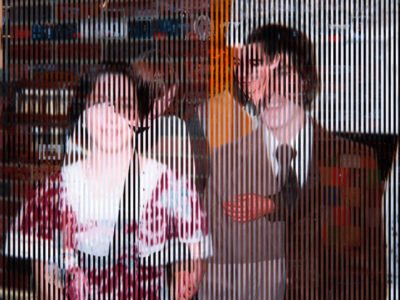Everybody has a different sense of what art is. Students from all over the country are currently showcasing their work and putting their interpretations up for scrutiny. Many artists are utilizing pieces of their own life to put on display for the world to see.
Sonja Johnson, senior MFA candidate at The University of Arizona, is being featured in their Senior Thesis show for her work exploring the conscious and unconscious states of mind. Incorporating Johnson’s own dreams into her pieces she, “hints at the sense of childhood nostalgia that is always present.” The shadow represents repressed thoughts, weaknesses and shortcomings.
Greg Wall, senior at The University of Pennsylvania, started examining staged political photos highlighting the theatrical aspects and removing the bodies seemingly filling space. This spring Wall has altered his focus, developing his interest in how we see rather than what we see. Using homemade screens Wall, “used the resin as a reflective surface to implicate the viewer in their screenic vision.”
Andrew Hendrixson, senior MFA candidate at The University of Florida, posed habit and ritual in his senior thesis In the Poetic Accumulations of Inefficient Time Well Spent. Hendrixson strives to give meaning to even the most humdrum of daily tasks. Combining scraps of fabric and items from the trash, Hendrixson hopes to show, “that in the right light even the mundane is magnificent.”
Ria Roberts, a senior at The University of Illinois, devotes her time to analyze, “experiences devoid of their referent and exist autonomously.” Everything is Anything Else, the University of Illinois’s senior thesis show, is examining post-Internet culture and how the integral use is effecting our daily lives. Roberts’ exhibit scrutinizes the phenomenology of the Internet and how it flattens the value of images.
Ashley Moore, an MFA candidate at The Ohio State University, splices two separate photographs and then combines them to showcase how photographs don’t accurately represent one’s life. Moore found a box of photographs in her basement and realized, “it is easy to assume a parallel existence based on the imagery presented, much harder to learn the truth about how the lives played out.”



















